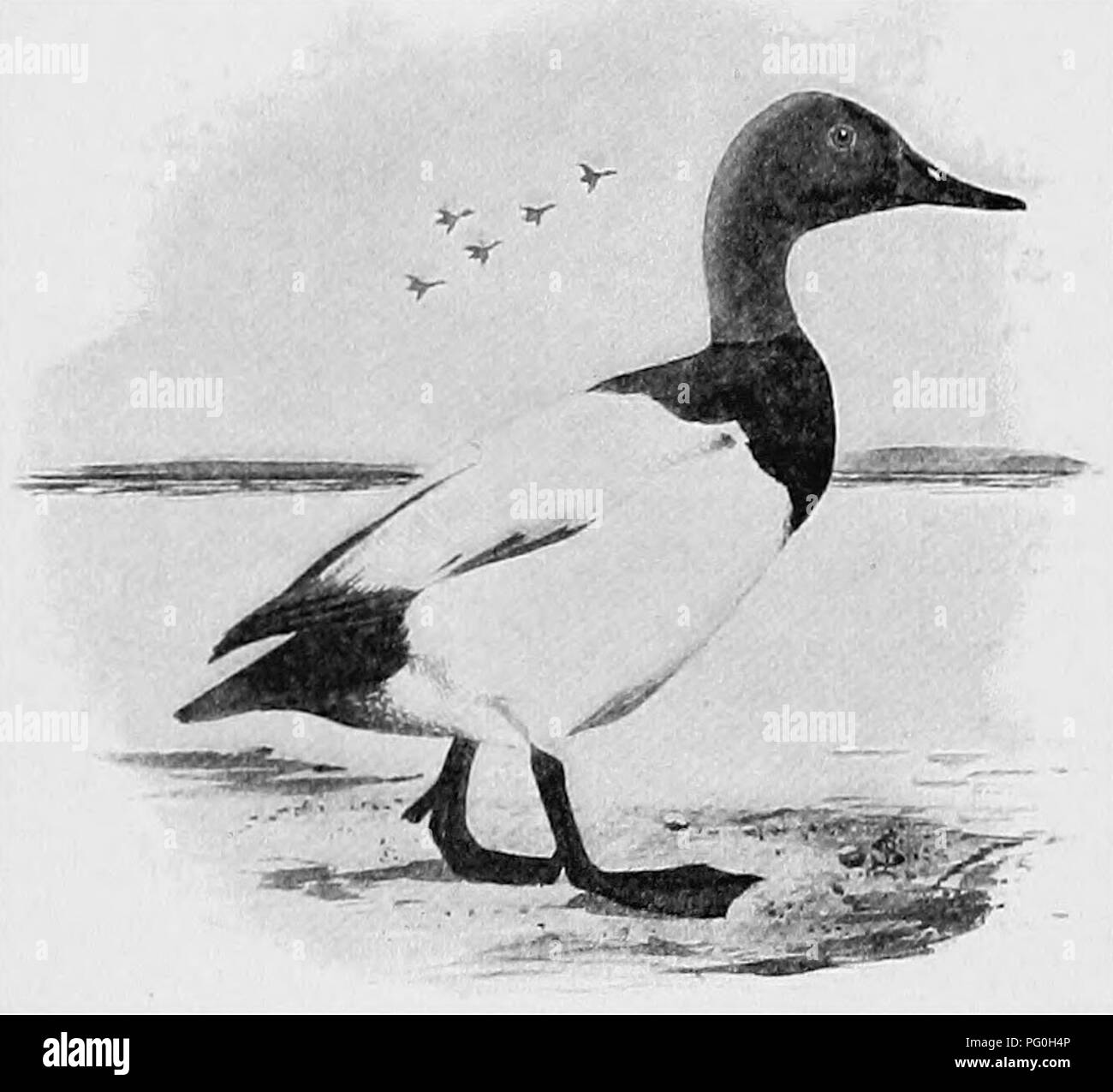. The American natural history; a foundation of useful knowledge of the higher animals of North America. Natural history. 188 DUCKS, GEESE, AND SWANS whose look of approval is a blighting curse to every living creature upon which it is bestowed. Because of this, the unfortunate Canvas-Back is now little more than a bird of history. It is now rarely seen outside of museums and the zoological parks and gardens which have been so fortu- nate as to secure a very few specimens. Unfor- tunately, it has been im- possible for even the most energetic duck-fanciers to secure a sufficient num- ber of unw

Image details
Contributor:
Central Historic Books / Alamy Stock PhotoImage ID:
PG0H4PFile size:
7.1 MB (221.8 KB Compressed download)Releases:
Model - no | Property - noDo I need a release?Dimensions:
1655 x 1509 px | 28 x 25.6 cm | 11 x 10.1 inches | 150dpiMore information:
This image is a public domain image, which means either that copyright has expired in the image or the copyright holder has waived their copyright. Alamy charges you a fee for access to the high resolution copy of the image.
This image could have imperfections as it’s either historical or reportage.
. The American natural history; a foundation of useful knowledge of the higher animals of North America. Natural history. 188 DUCKS, GEESE, AND SWANS whose look of approval is a blighting curse to every living creature upon which it is bestowed. Because of this, the unfortunate Canvas-Back is now little more than a bird of history. It is now rarely seen outside of museums and the zoological parks and gardens which have been so fortu- nate as to secure a very few specimens. Unfor- tunately, it has been im- possible for even the most energetic duck-fanciers to secure a sufficient num- ber of unwounded speci- mens to carry out the ex- periments necessary to determine the precise conditions under which this species will breed in captivity. No one ever sees more than two or three living Canvas-Backs together in an aviary, and thus far, I believe, none have bred. It is unnecessary to describe this species, for it is probable that less than one per cent of the readers hereof ever will see one wild and unlabelled. Its range was once the same as that of the redhead, and its habits also were quite similar. Its one chance of survival rests upon the integrity of the federal migra- tory bird law and its protection from spring and market shoot- ing. If those two evils are stopped for all time, the succulent Canvas-Back will eventually return to us in large numbers; and already there are signs that it is trying hard to do so.. THE CANVAS-BACK DUCK.. Please note that these images are extracted from scanned page images that may have been digitally enhanced for readability - coloration and appearance of these illustrations may not perfectly resemble the original work.. Hornaday, William Temple, 1854-1937. New York, C. Scribner's Sons